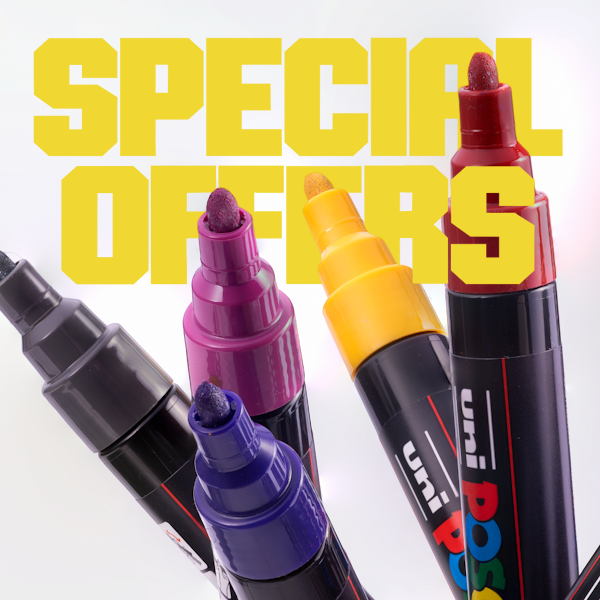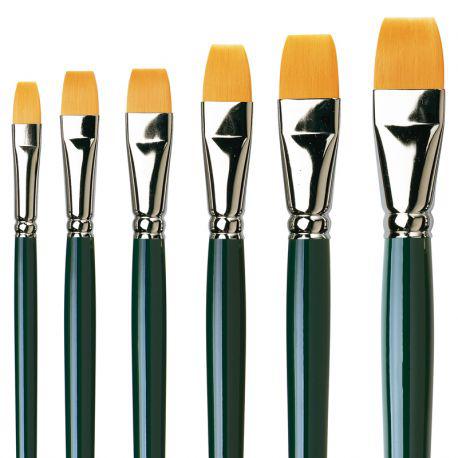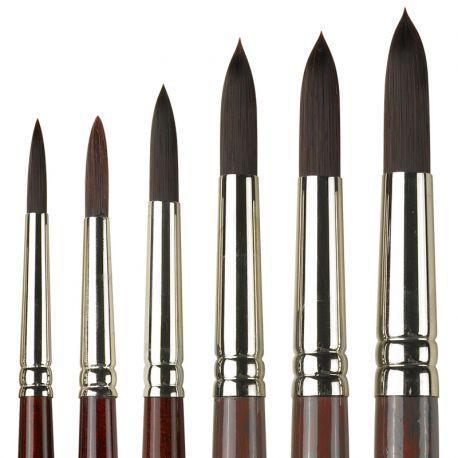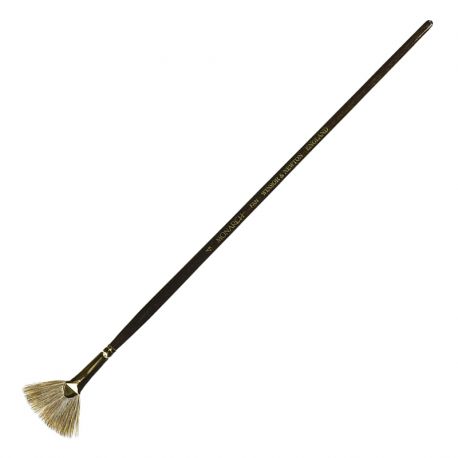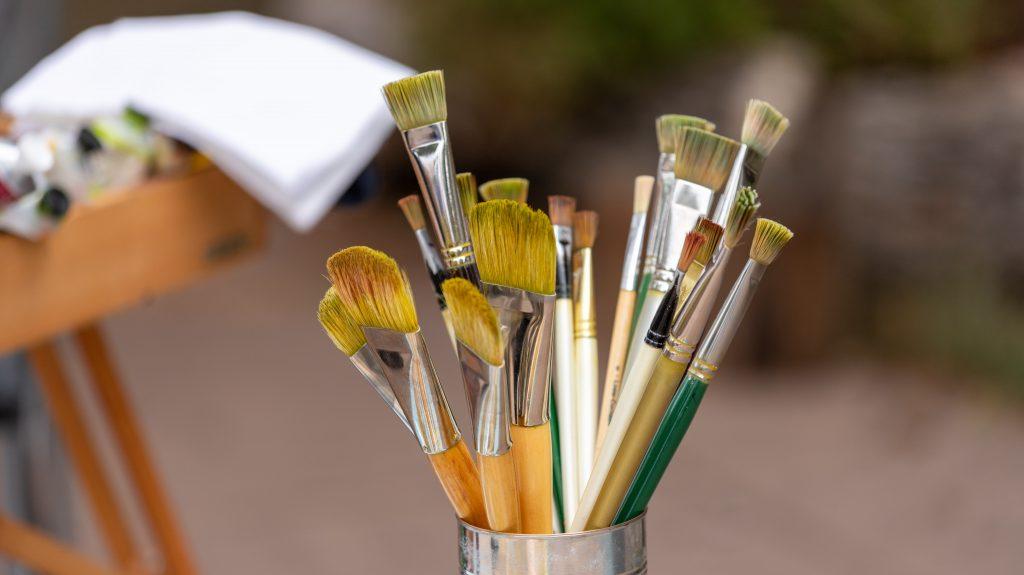
It can be difficult to know where to start when it comes to searching for the best acrylic painting brushes. There are many different ranges from numerous manufacturers on the market, which means there is a wide variety of choice. Let’s face it, having too many options can often make a decision even harder!
Brush types can influence the texture in your artwork, they allow for different shapes to be created and some will simply serve a purpose better than another. From flat hog hair to round nylon brushes, we can help. Read our guide which will help you choose the right paint brushes for your acrylic masterpieces.
Flat Brushes
Flat acrylic paint brushes are a staple piece of kit for all acrylic artists. They can hold lots of paint which makes them ideal for easy coverage of large areas – such as backgrounds – and are great for blending colours. Flat brushes can also be used along their edge to create fine lines making them extremely versatile.
Round Brushes
Round brushes are required for detailed work and for filling in smaller areas of your artwork. The tip of a round brush can create lines of various thickness depending on the pressure applied (the more pressure, the thicker the line). Another consideration for detailed work is also the length of the bristles – shorter bristles allow for greater control.
Filbert Brushes
A filbert brush is a combination of the flat and the round brush, rectangular shaped with a rounded tip. The filbert brush is ideal for covering your canvas with a base coat, as well as creating finer details such as flower petals.
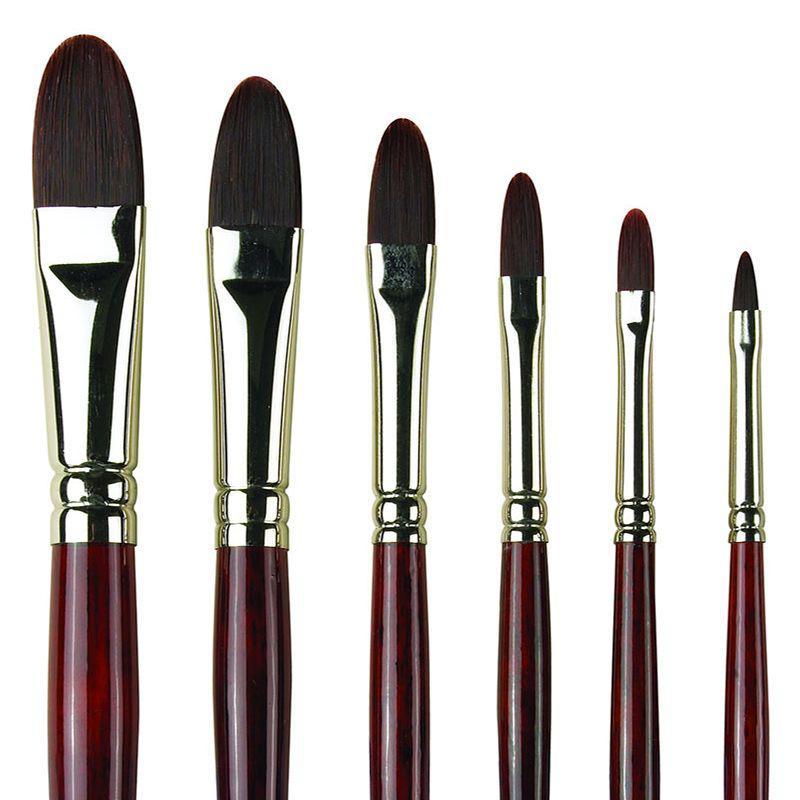
Fan Brushes
Fan brushes, which have a fan shaped tip, are great for creating natural elements in your artwork such as shrubbery, clouds, and more. They are helpful for blending and creating unusual textures and effects such as building ridges in the paint. It is important to select a fan brush with durable bristles when painting with acrylics as the nature of the heavier paint can cause issues with clumping.
Synthetic v Natural
When painting with acrylics, many artists prefer the use of synthetic acrylic paint brushes as the bristles are less likely to become damaged over time from excessive standing time in water, or from the paint itself – which can be harsh on natural bristles such as hog hair. However, the strokes placed by a natural bristle can appear to have more texture than that of a synthetic bristle due to their natural split-ends.
When painting with acrylic, you can also use palette knives. The use of knives means you can achieve additional effects such as straight lines and edges, multi-coloured strokes, highlighting and building up textures. They also enable you to cover a large area of canvas, quickly.
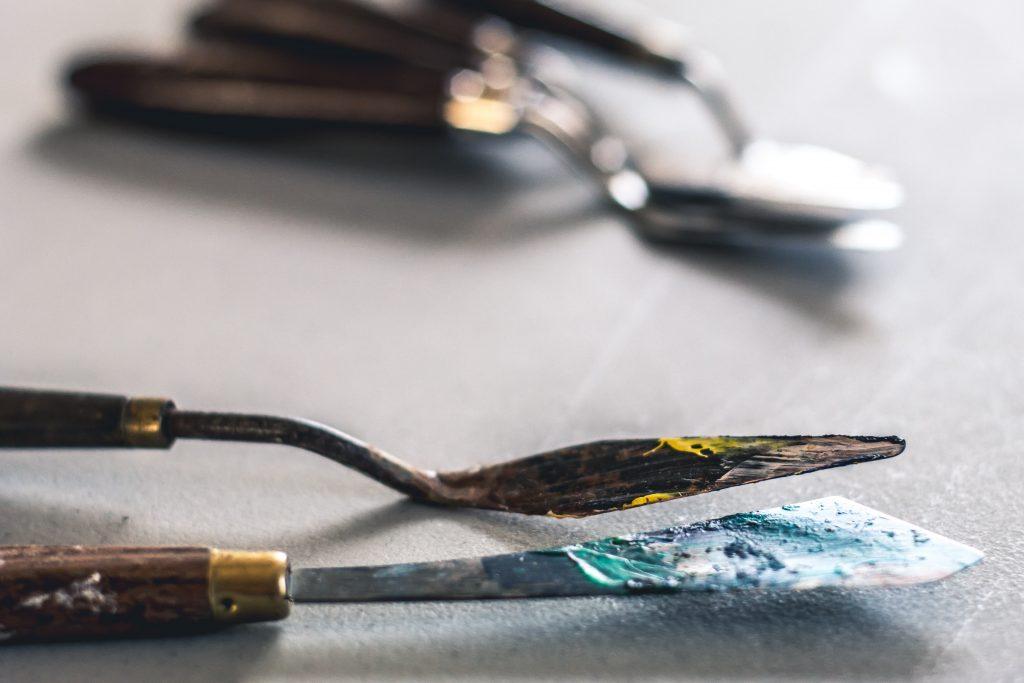
Painting with palette knives
Every artist will have an individual preference for brushes, so it’s important to explore the options that are available until you find the tools that work best for you. A range of the above brushes such as the Daler-Rowney System 3 Acrylic Brush Classic Selection are sure to give you a taste of the best.
You can browse our full range of high quality paint brushes for acrylics for more options. Don’t forget that looking after your paint brushes by cleaning and preserving them properly will keep them in optimal condition. Once you’ve made your decision on brushes, ensure you have the accessories to keep them pristine!
If you’re completely new to painting with acrylics, take a look at this video which will help get you started:




















